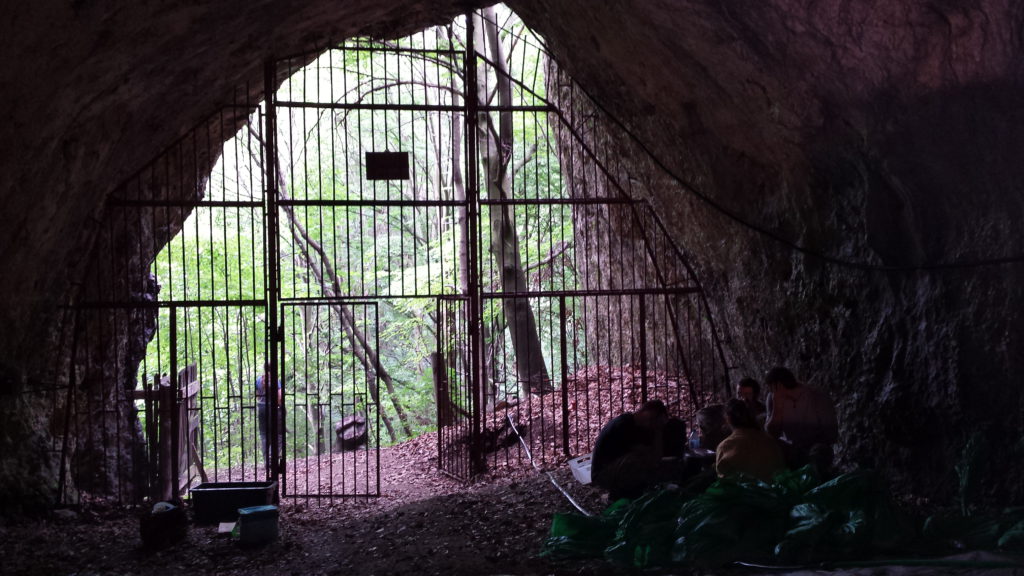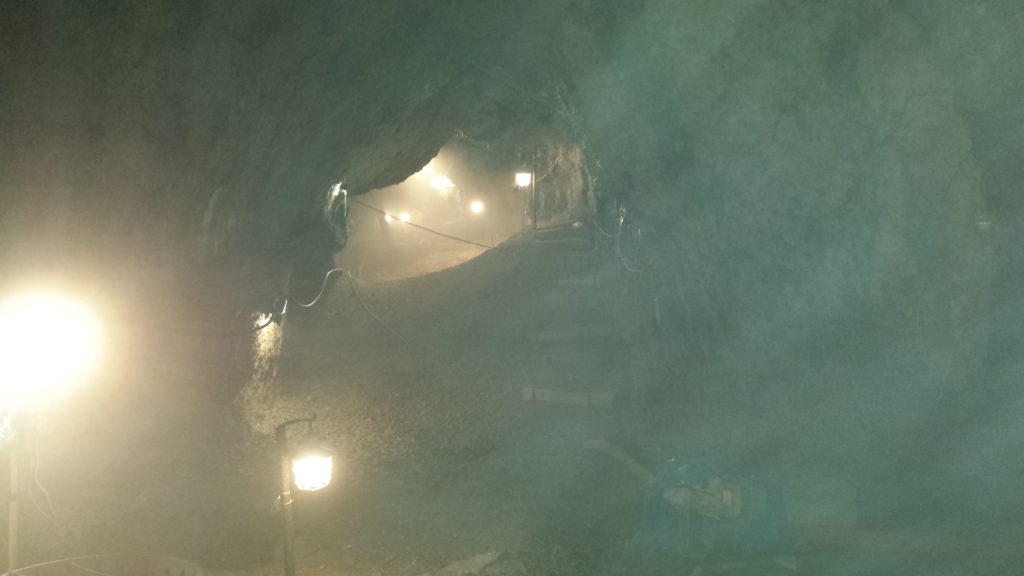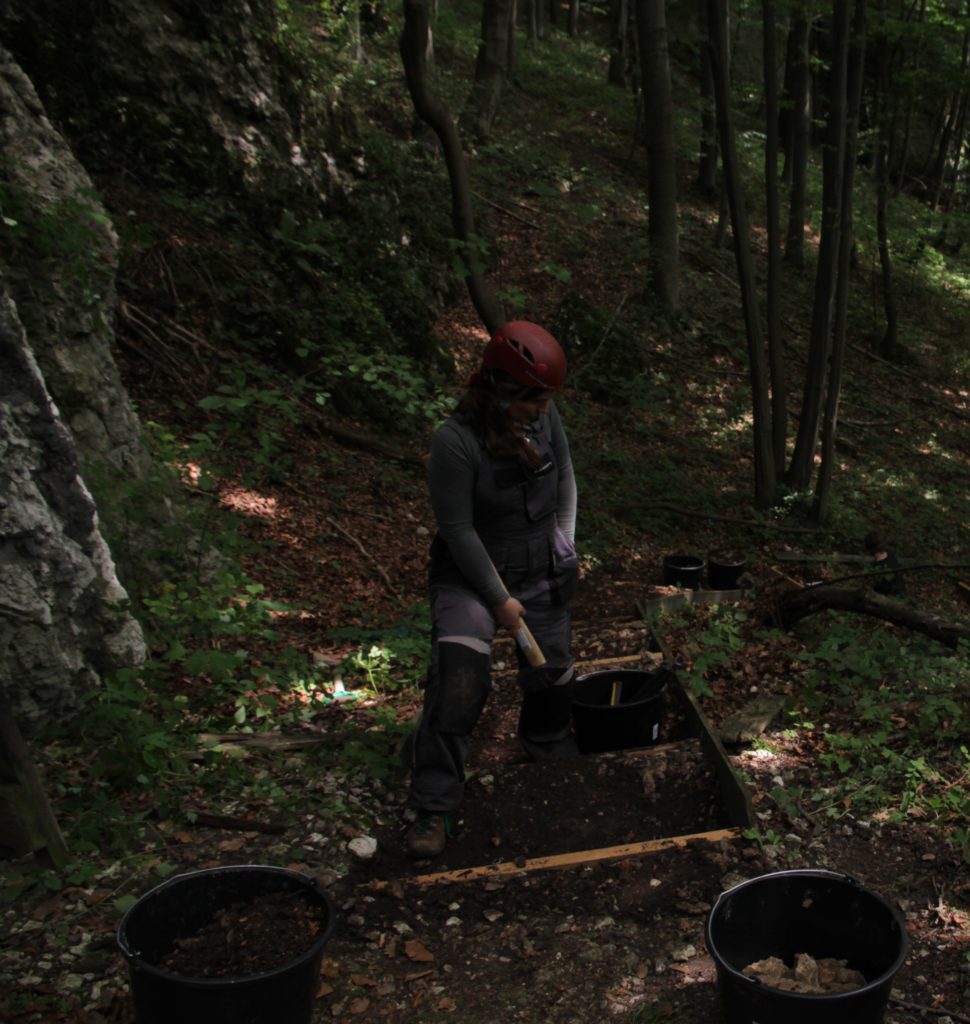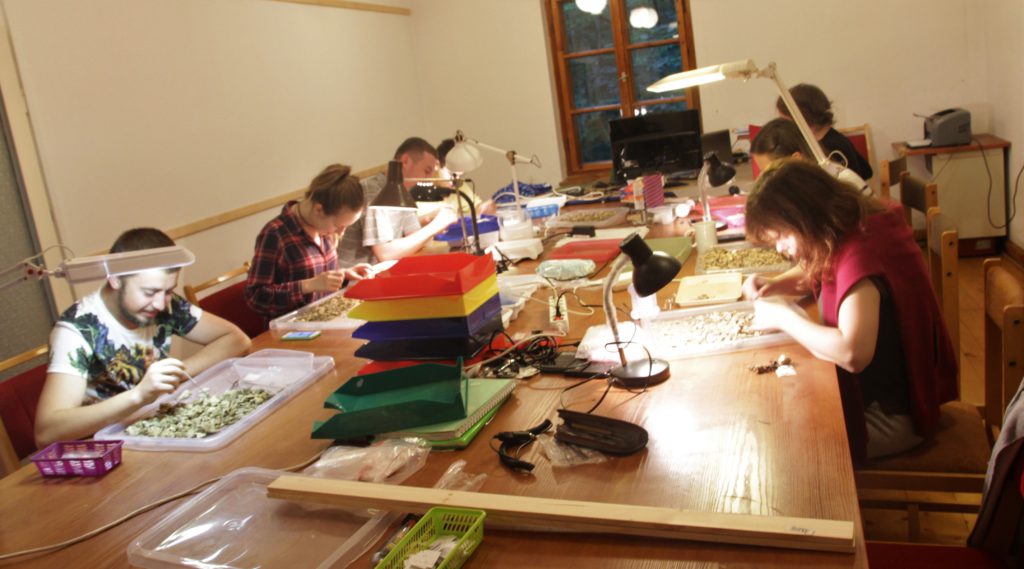
We started our project fieldwork with Koziarnia Cave, situated in Koziarnia Gorge. We chosen as a base a nearby historic villa named “Koziarnia”, in which The Seismographic Observatory of the Institute of Geophysics PAN was until recently located. Koziarnia Cave is situated on a rather steep, forested slope, and its entrance is secured with a crate. The crate is necessary because of seismograph, which is located in the cave, and various wires laying on the ground, connected to it. The cave is lit and has its own source of electricity, which was quite helpful during the excavations. Main tasks for this fieldwork was opening old trench, exposing profile and collecting samples. We wanted to catch a layer that was supposed to be connected to jerzmanowicen culture, and that was searched for by Waldemar Chmielewski many years ago. Old trenches were not filled up, so soil from the upper part of profiles slipped off. Moreover upper layers of not excavated part of cave were partly destroyed while laying wires, necessary for correct functioning of the seismograph. Taking this into consideration, we chose to open a trench quite deep in the cave, hoping to recover the least damaged profile.

Excavations were lead by PhD Małgorzata Kot, a leader of our project. Participants were students of archaeology from University of Warsaw, students of archaeology from University of Kharkov (Ukraine) and volunteers. We started our work with reconstructing steps on the slope leading to Koziarnia Cave and building a system for flotation with different kind of sieves. Flotation is a process in which, using water and sieves with holes of different size, we can separate soil from stones and artefacts. This method is very useful when we want to find very small artifact or bones and we dig in clay.

After completing these tasks we proceeded to actual excavations, and we opened a trench 1,5 m long and 1,5 m wide. We intended to catch a corner of the old trench. All the excavated material we put into the bags and moved to a place, were we flotated. After flotation we got a sample without soil. We dried them in the sun on trays and foil and later moved them to our laboratory, where using tweezers, we searched through them and picked out small bones and artifacts, which were not noticed during exploration.

We consider our excavations a great success. We managed to uncover an old profile and collect all the samples we needed. We also found a lot of materials in situ, that is found in its original location, during actual exploration. Now it’s time to send all the materials and samples to different kind of specialist, members of our research team, and wait for the results!






